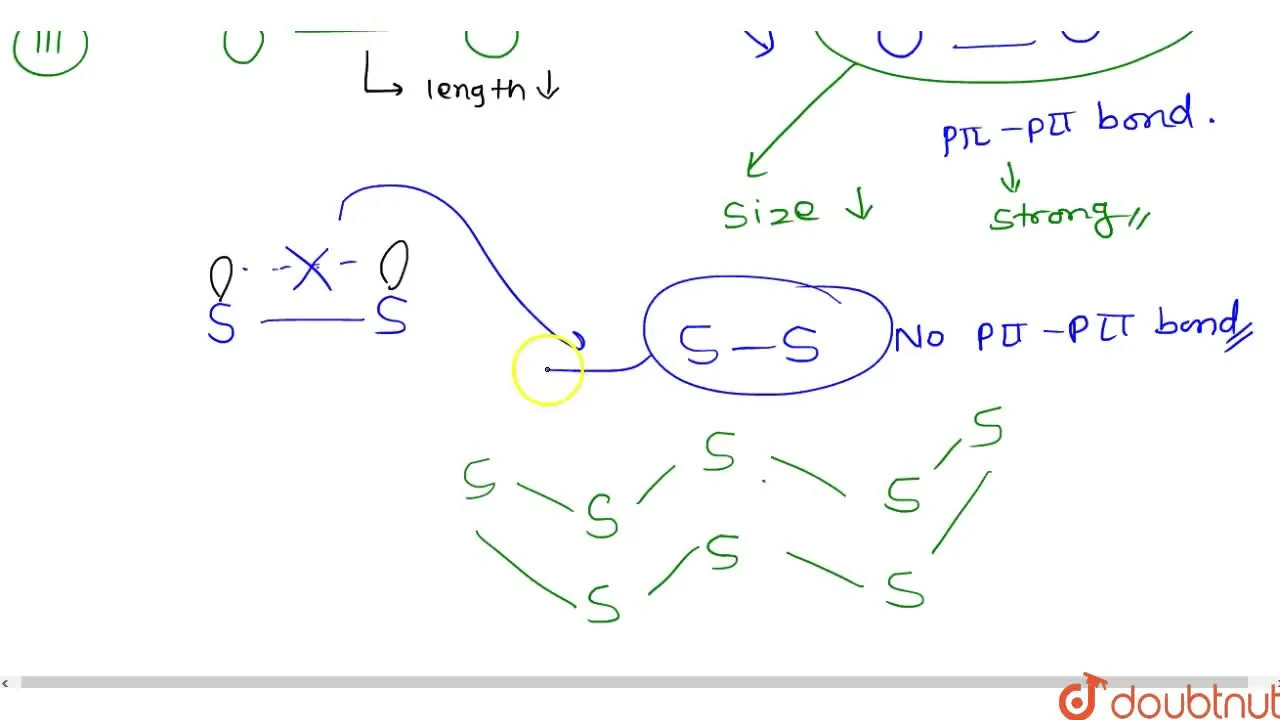Give reasons for the following observations :
Why SF4 undergoes hydrolysis but not SF6?
Or SF6 is inert towards hydroysis.
SF6 is much less reactive than SF4.
Or (i) SF4 is easily hydrolysed whereas SF6 is not easily hydrolysed.
(ii) Sulpher exhibits greater tendency for calenation than selenium.
(iii) Sulpher has a higher tendency for catenation than oxygen.
In SF6, S is sterically protected by six F atoms and hence does not allow H2O molecules to attack the S atom. Furthermore, F does not have d-orbitals to accept the electrons donated by H2O molecules. As a result of these two resasons, SF6 does not undero hydrolysis. In constrast, in SF4, S is not sterically protected since it is surrounded by only four F atoms. As a result, attack of H2O molecules on S atom can take place easily and hence hydrolysis occurs.
Related Playlists
- BOOK - PRADEEPCHAPTER - P-BLOCK ELEMENTS EXERCISE - NCERT QUESTIONS AND EXERCISES WITH ANSWERS96videos
P-BLOCK ELEMENTS
- BOOK - PRADEEPCHAPTER - P-BLOCK ELEMENTS EXERCISE - MCQ - I27videos
P-BLOCK ELEMENTS
- BOOK - PRADEEPCHAPTER - P-BLOCK ELEMENTS EXERCISE - FILL IN THE BLANKS34videos
P-BLOCK ELEMENTS
- BOOK - PRADEEPCHAPTER - ORGANIC COMPOUNDS CONTAINING NITROGENEXERCISE - IMPORTANT QUESTIONS FOR BOARD EXAMINATION27videos
ORGANIC COMPOUNDS CONTAINING NITROGEN
- BOOK - PRADEEPCHAPTER - POLYMERSEXERCISE - IMPORTANT Questions (For Board Examination)27videos
POLYMERS
Similar Questions
Give reasons for the following observations :
Why SF4 undergoes hydrolysis but not SF6?
Or SF6 is inert towards hydroysis.
SF6 is much less reactive than SF4.
Or (i) SF4 is easily hydrolysed whereas SF6 is not easily hydrolysed.
(ii) Sulpher exhibits greater tendency for calenation than selenium.
(iii) Sulpher has a higher tendency for catenation than oxygen.View SolutionExplain why SF4 is easily hydrolysed, whereas SF6 is resistant to hydrolysis ?
View SolutionSF6 is not easily hydrolysed whereas SF4 can be. Assign reason.
View SolutionExplain the following situations :
SF4 is easily hydrolysed whereas SF is not easily hydrolysed.View SolutionAssign reason for the following:
SF6 is much less reactive than SF4.View SolutionAssign a reason for the following statements :
SF6 is not easily hydrolysed.View SolutionGive reasons for the following
(a) CCl4 is immiscible in water, whereas SiCl4 is easily hydrolysed.
(b) Carbon has a strong tendency for catenation compared to silicon.View SolutionAssign suitable reason for the following:
SF6 in inert towards hydrolysis.View SolutionGive reasons for the following
(a) CCl4 is immiscible in water, whereas SiCl4 is easily hydrolysed.
(b) Carbon has a strong tendency for catenation compared to silicon.View SolutionExplain the following situations :
(i) In the structure of HNO3 molecule , the N-O bond (121 pm) is shorter than N-OH bond (140pm).
(ii) SF4 is easily hydrolysed whereas SF6 is not easily hydrolysed.
(iii) XeF2 has a straight linear structure and not a bent angular structure.View Solution


